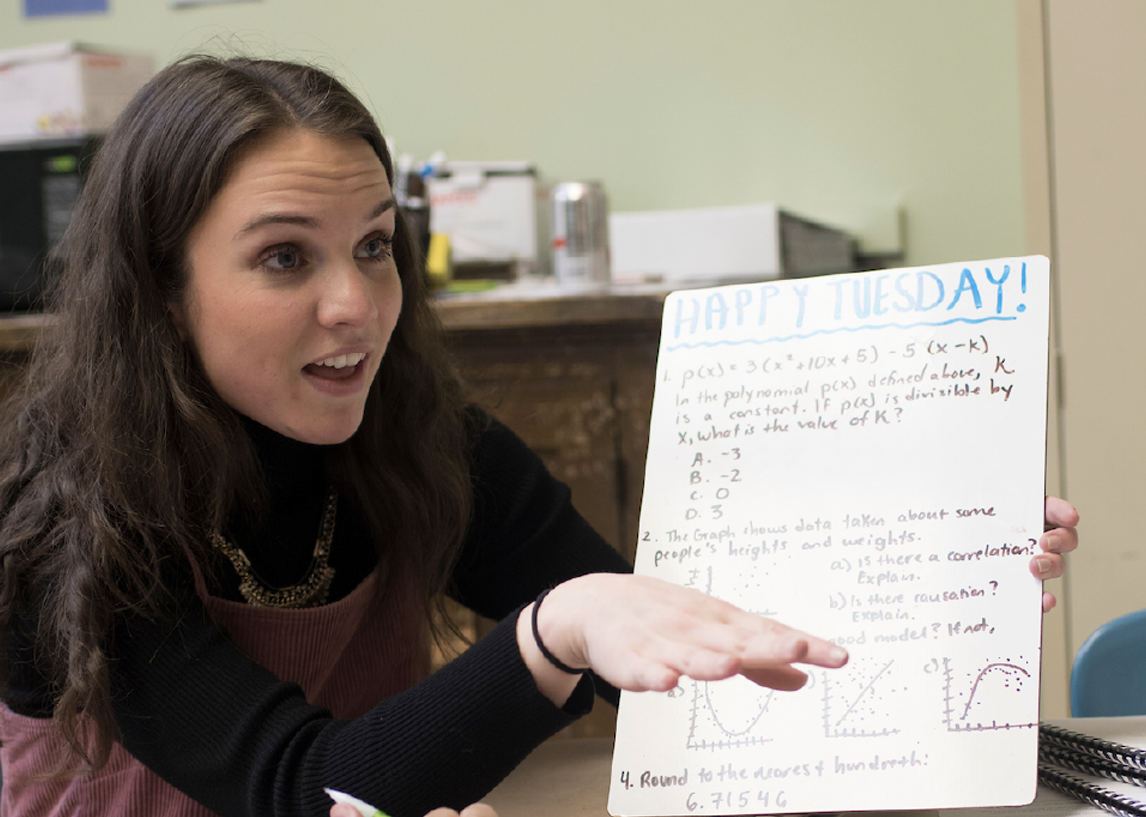Key Findings:
- Even though ESSER funding is running out, alternative funding sources are available for tutoring programs, including Title I funds, AmeriCorps grants, Federal Work-Study programs, Hawkins Grants, and Department of Labor apprenticeships.
- High-impact tutoring can significantly improve graduation rates, especially by focusing on interventions in grade three literacy and ninth-grade algebra.
- Tutoring pays off financially for schools: Retained students generate more per-pupil funding.
- The most successful tutoring programs embed tutors within the classroom structure, creating a strong connection between tutors and teachers.
For the past four years, high-impact tutoring programs have been a lifeline for students struggling to catch up academically, particularly after the disruptions caused by COVID-19. They have significantly boosted student achievement, particularly in critical areas like ninth-grade algebra and third-grade literacy. However, with COVID-19 relief funds (ESSER) ending, many districts need help to sustain these valuable programs.
The transformative power of high-impact tutoring is undeniable. These programs provide students with focused, individualized support, helping them overcome learning gaps and achieve academic success. This blog post explores alternative funding options and successful program models to ensure high-impact tutoring continues to reach students in need.
The Power of High-Impact Tutoring
Students who do not pass ninth-grade algebra are four times less likely to graduate from high school. Early intervention to prevent academic roadblocks and ensure students stay on track for graduation is crucial.
High-impact tutoring isn’t just about academic success; it has a significant financial impact on schools. If students fail academically and dropout, they take their future annual per-pupil dollars away from the district. Schools can secure funding for future endeavors by preventing dropouts through effective tutoring programs.
“It’s not helping provide current dollars, but rather forward-looking funds,” said Alan Safran, CEO and co-founder of Saga Education. “Let’s stipulate that schools should do everything possible to get kids over that Algebra 1 bar. If you don’t, those kids may well drop out because most students drop out after ninth grade for academic failure. The number one course they fail is Algebra 1. If you can insure against that, you’ve increased the odds of retaining that student through graduation, thereby preserving three more years of state and local funding.”
According to Safran, a second financial support is for districts to repurpose some federal Title I funding.
“Districts use Title I money for many purposes, and we are suggesting repurposing some of it to the intervention that has the highest academic return on investment: high-impact tutoring. We advise redirecting some Title 1 funds to the one-third of students who need the tutoring support for early literacy (grades 12 and 3) and middle/late math (grades 8 and 9).” Safran notes that districts must repurpose people and funds and suggests that existing staff currently funded by Title I could be exceptional tutors or tutor supervisors.
“I recommend you look hard at the return on investment you’ve got now in Title I and see if it might be better placed in an evidence-based tutoring program in your district.”
Download Infographic
Funding Solutions Beyond ESSER Funds
Districts can retain valuable per-pupil funding by preventing students from dropping out due to academic failure, as this funding is crucial for schools to operate and provide resources for all students. Below are alternative options for schools to explore:
-
Repurposing Title I Funds:
-
-
- Title I funding is a federal program designed to support low-income students. Many districts already utilize Title I funds for educational interventions. Repurposing some Title I funds for early literacy and middle/late math support can support tutoring programs in these critical grades.
-
Durable and less well-known federal funding sources:
-
- Several federal programs offer opportunities for districts to secure funding for tutoring programs. These include:
- AmeriCorps Grants: These three-year state grants can provide substantial funding for tutoring programs, up to 80% focused on labor. While the application deadlines have passed for the current year, schools can plan for future cycles.
- Federal Work-Study: This program subsidizes college students receiving financial aid, creating a potential pool of tutors. The federal government encourages universities to allocate more work-study funds towards off-campus jobs, specifically including tutoring positions. Consequently, this creates a readily available pool of potential tutors with financial aid subsidizing their wages.
- Dept of Ed Hawkins grants & Department of Labor apprenticeships:
These programs offer funding to support pre-service teachers. Tutoring is an apprenticeship program that creates a pipeline of future teachers.
The Importance of High-Impact Tutor Program Design
Embedding tutors within the classroom or in a separate tutoring room down the hall is an effective way to schedule in-school-day tutoring. “I’ve seen in several districts that tutoring is embedded as part of a class. [It’s] a wonderful model because it connects the tutors to the teachers, which is so helpful.”
Conclusion
High-impact tutoring offers a powerful solution for improving student success and delivering a strong return on investment for sustainable district finances. By exploring alternative funding options and implementing successful program models, schools can ensure these valuable programs continue to make a difference in their students’ lives.
“My dream since working in this field for 20 years is that good tutoring continues, and it grows to reach what I think are 3 million kids in US public schools who need tutoring annually because they are at risk of not clearing the crucial early literacy and late math bars.”
Download Infographic


